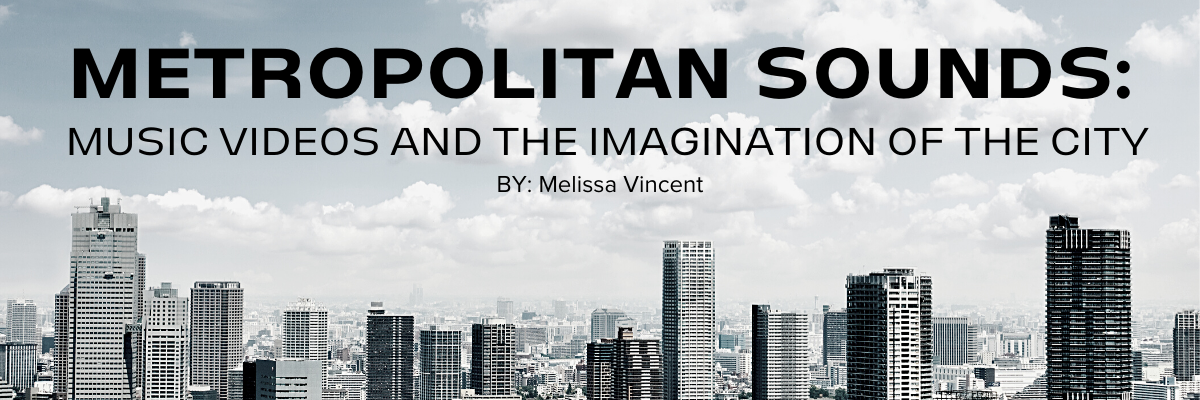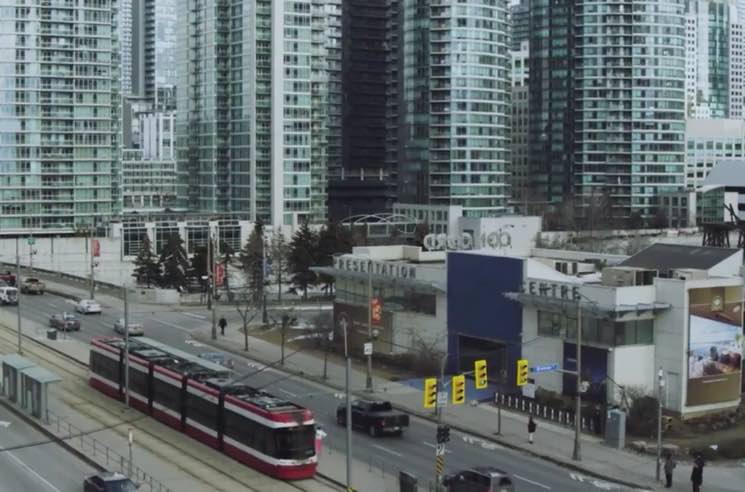
How do we understand the sound and spirit of a city? Do you hear it in the relaxed conversational thrum of a high-traffic park? Or is it captured in the sound of icy, wet slush splashing under the sole of boots as you speed up to catch a streetcar? Does it happen in the moments where you overhear the muted laughter of a conversation unfolding on the other side of the street; or, does it occur when you register the deep baseline of a band playing in the concert hall, as you collect yourself in the restroom?
Historically, music videos have had an indomitable role in not only constructing the idea of what it means to live in a city, but archiving a relationship to a place that’s consistently evolving. They spotlight venues in-action graced by an artist on stage, like The Tragically Hip in “My Music at Work,” and remind us that sidewalks are well-suited for meandering and musing, as K-Os did with “Crabbukkit.” In the process, they invite us to develop and collaborate on personal soundtracks for our everyday lives. As music videos came to prominence as a necessary part of a track’s release strategy in the 70s, Canada was a quick adopter. The launch of MuchMusic in 1984, and particularly, MuchFACT in 1984, helped fund the creation of uniquely Canadian videos.
But to capture a city on-screen, particularly, in the space of a music video, encourages us to revalue and elevate ordinary moments. In the video Dreams Tonite by Alvvays, the band uses archival footage of Montreal’s Expo 67 from the National Film Board to simulate a mid-century sense of wonderment and anticipation of things to come. As the band performs on-stage, spectators bustle around, immersing themselves in the new technology being presented. The grain of the film reveals it’s time setting but the crowd shots of spectators milling about is timeless.
In Sloan’s 1996 track, “The Good In Everyone,” the video pays homage to a scene from Peter Fonda’s Easy Rider. The band gazes upward as planes land in a terminal, and the steady, unmistakable sound of an aircraft descending in the distance adds a new sonic accompaniment to the track. It was filmed at Toronto Pearson International Airport, a spot familiar to many but rarely memorialized. But, when it becomes the backdrop of the song’s extended intro, it morphs from simply an airport to a portal — reminding us of the unsettling feeling of ceaseless travel, and prompting us to think more broadly about new possibilities, brought on by the arrival to a new place. More than a decade later, Kardinal Offishall’s video for “The Anthem” served as a firsthand tour of the city, sliding shots of everything from community centers to arenas into a fever dream of Toronto from every possible vantage point.

It’s far from the only time an innocuous city landmark has proven to be a suitable backdrop for a song. In Cadence Weapon’s “High Rise,” the Toronto cityscape reveals its Orwellian tendencies. The majority of the subjects in the video are anonymous, and seemingly, unaware that they’re being recorded— the only identifiable figures are dancers who glide in and out of the frame, their presence unable to faze those on the street level. The video suggests the reality of what it means to live in a city where you’re casually, even accidentally, surveilled by those around you, and amplifies how that act is made more visceral in a city largely composed of glass mirrors.
Because while cities breed nourishing creative ecosystems, and spaces of belonging, sometimes leaving can be equally effective at teaching you what a city can offer — and revealing what it can’t. In the video “Indomitable” by DJ Shub ft. The Northern Cree singers, Toronto electronic artist Classic Roots plays an office worker who runs out the clock on his day job to attend a PowWow. As a propulsive EDM beat rises to its climax, the protagonist relishes in the emancipatory feeling of coming home.
If you’re of a certain age or generation, you don’t need to dig deep to remember your first memory of a music video experience. For many, it might have been an inaugural experience with film; one that helped inform your personal taste, and develop an appreciation for art. For those, either living in major cities, or in peripheral regions and provinces, music videos exist as a window into a place you may aspire to reside — they become the template for a mythic all-nighter and encourage you to romanticize your surroundings. In turn, they illuminate the city at, its crest and peaks, with heart and accuracy.
Written for the Academy by Melissa Vincent.


